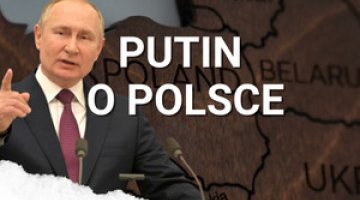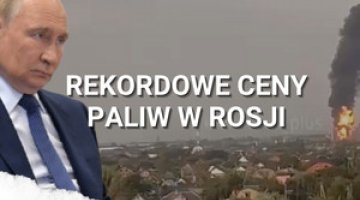The credibility of Russian economic statistics is a growing problem
Analysing Russia’s current economic situation is becoming increasingly difficult. Since the beginning of its invasion of Ukraine, the Kremlin has restricted access to statistical data, including those concerning foreign trade. On 26 April, the government of the Russian Federation decided it would no longer report on the country’s oil and gas output until 1 April 2024. This makes is impossible to examine the statistics of the sector that generates over 20% of Russia’s GDP. This decision was taken on the basis of an act passed in February this year allowing the Kremlin to temporarily suspend the publication of any economic indicators.
Commentary
- The increasingly restricted access to Russian statistical data offers the government more and more options to use statistics for propaganda purposes, and to convince both the West and its own citizens that the state is immune to sanctions and the costs of war. There have been numerous reservations about the credibility of the data Russia has published in recent years. The Russian Federal State Statistics Service (Rosstat) frequently changes the methodology it uses, the way the data is presented and the frequency of publication, which has made it difficult or even impossible to compare the information it issues in the long run. Questions were also often raised about updates to the data which significantly altered previous readings, something Rosstat could not explain (see ‘The improving situation in Russia: reality or creative statistics?’). The agency has also been particularly strongly criticised for the 2021 census. According to Russian demographers, the data published therein does not reflect reality; the errors concern both the population size and the age and ethnic structures of Russian society (see ‘Алексей Ракша: «Перепись прошла ужасно, огромное число людей в ней не участвовали»’).
- Rosstat has been accused of succumbing to pressure from the Kremlin and effectively becoming involved in government propaganda. Starting from 2017, Rosstat has reported directly to the Ministry of Economic Development (MED), which is responsible for implementing Russia’s economic policy and achieving the country’s macroeconomic goals. The government tightened its grip on Rosstat by placing the ministry’s representatives in charge of the statistical service twice in succession; neither of them had had any previous experience in the field of statistics. In 2018, Pavel Malkov, who had previously served as a department director at MED, was appointed as the head of Rosstat. In 2022, Malkov was promoted to the governorship of Ryazan oblast; he was replaced last May by Sergei Galkin, who had previously served as the Deputy Minister of Economic Development.
- The scale and dynamics of the changes taking place in the Russian economy and the major disparities between individual sectors and regions make analysing the country’s current economic situation even more difficult. As a result, indicators such as GDP say less and less about the real state of the Russian economy. Moreover, the comparative statistical database, which in the case of Russia saw some rapid changes in 2022, has a very strong influence on economic statistics. There were clear signs of economic revival after two years of the pandemic in January and February last year. In turn, entrepreneurs halted production in the first two months following the invasion of Ukraine; this was primarily related to sanctions, the collapse of imports, corporate boycotts and a strong depreciation of the Russian currency. However, Russian companies adapted to the new conditions of foreign cooperation during the second half of 2022. In that period budget expenditure spiked, and it is continuing to stimulate economic activity in the first months of 2023. As a result, the fiscal boost has made it possible to alleviate the negative consequences of the sanctions.
- Given the numerous objections to Rosstat’s work, the statistics published in Russia should be approached with great caution. In many cases, however, we have no other information than that presented by the official statistics service. No other agency has the ability to collect and process data from all regions and sectors of the economy. Clearly the indicators Rosstat has presented in recent months reveal that financial, production and human resources have been focused on the industries supporting the war. This is happening at the expense of other sectors of the economy, especially those focused on meeting consumer demand. As a result, industries that carry out public procurement and receive budget funds are improving their performance, while production in enterprises affected by Western restrictions continues to fall.





